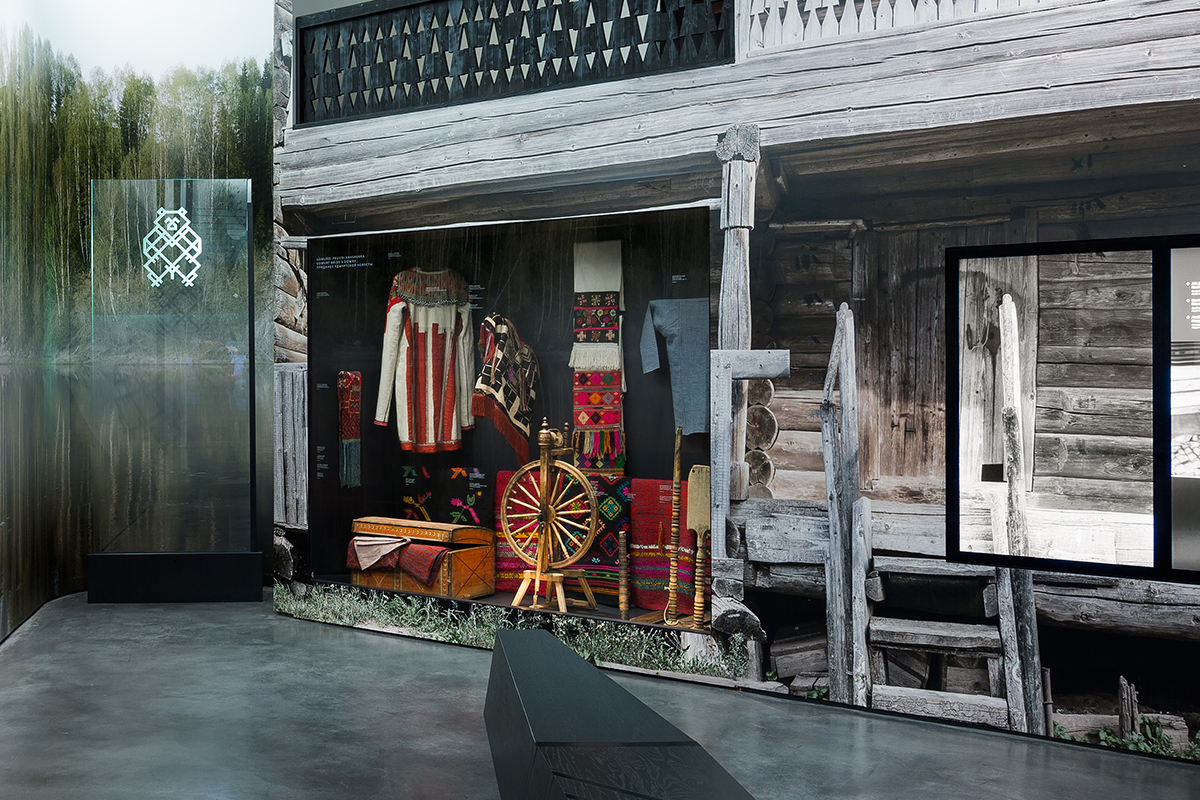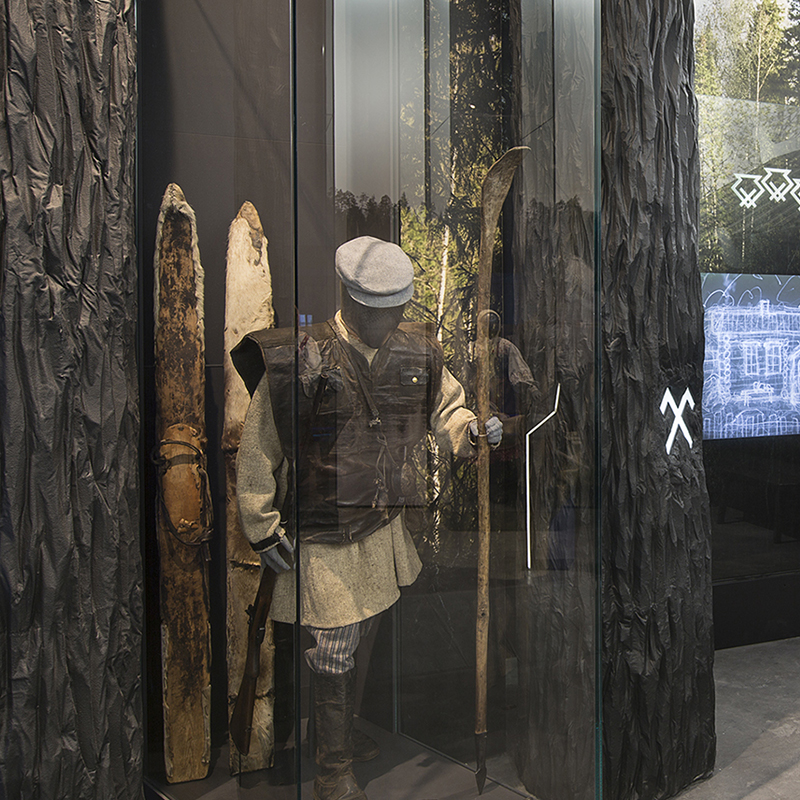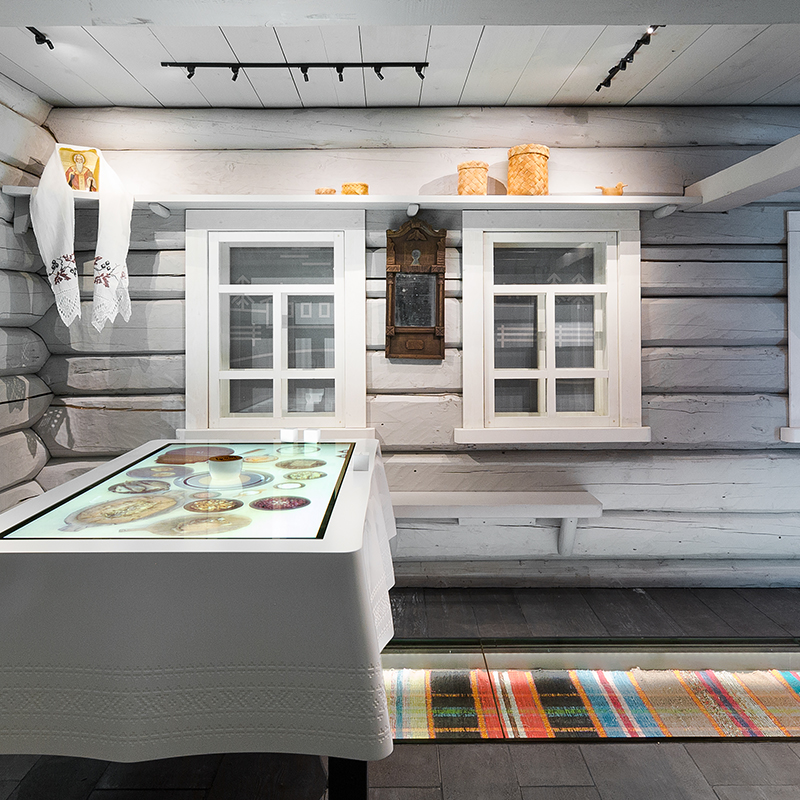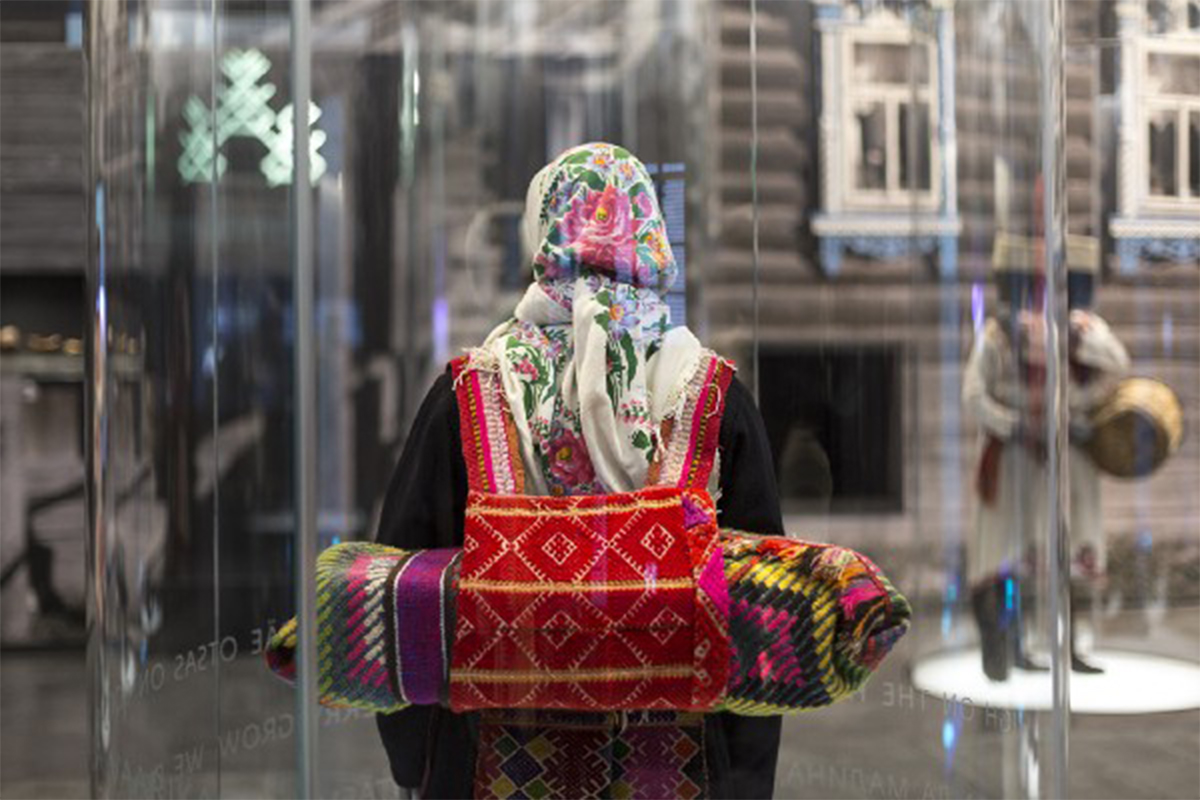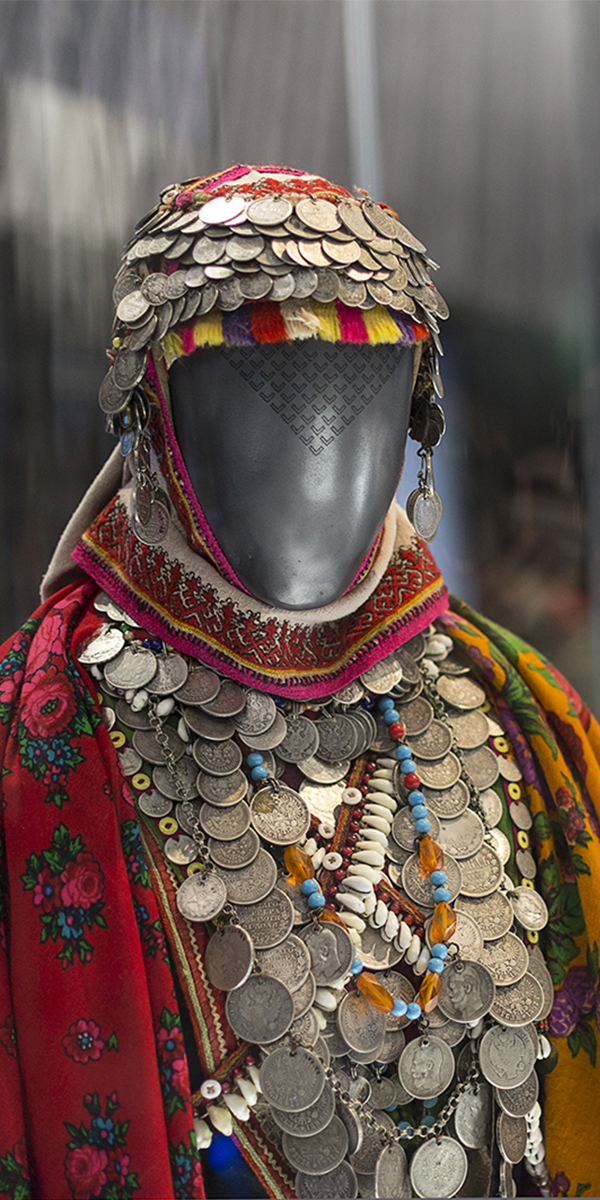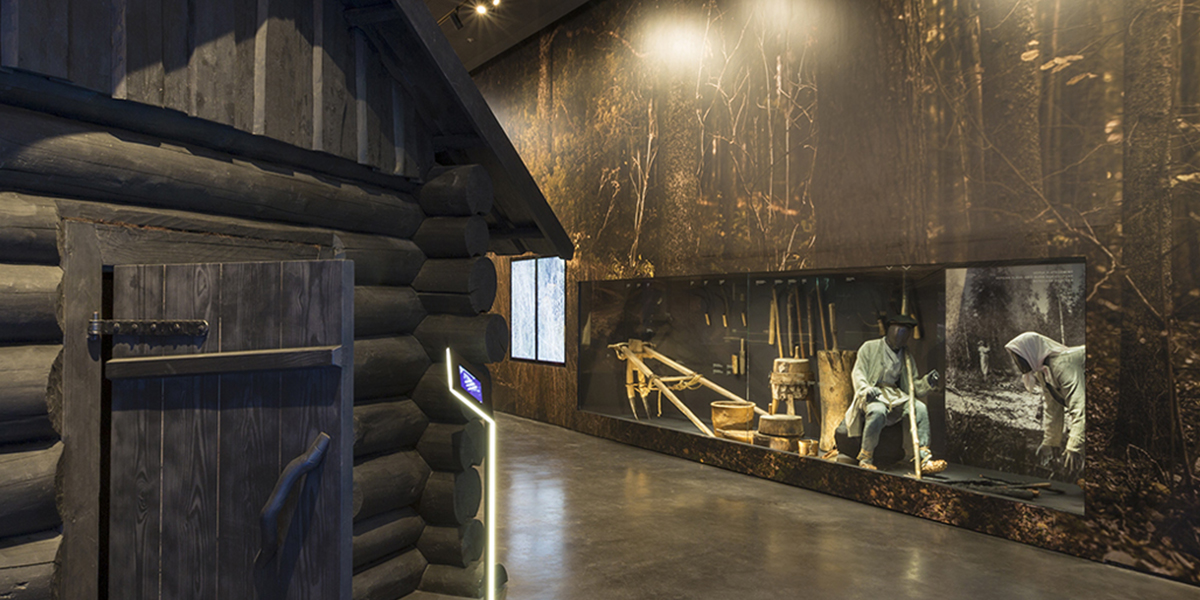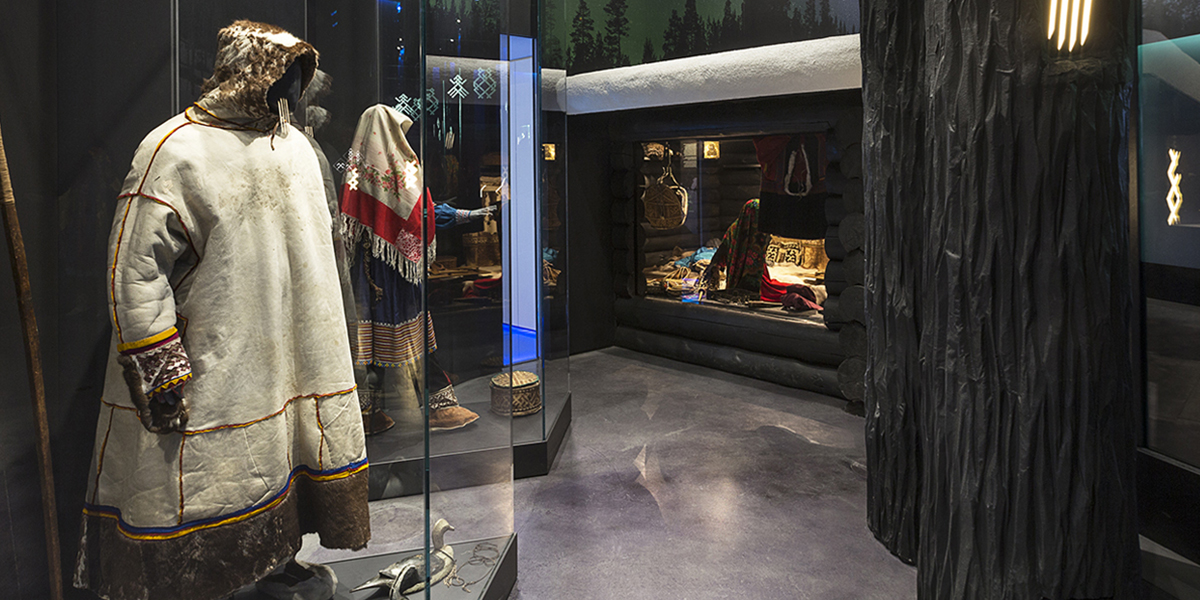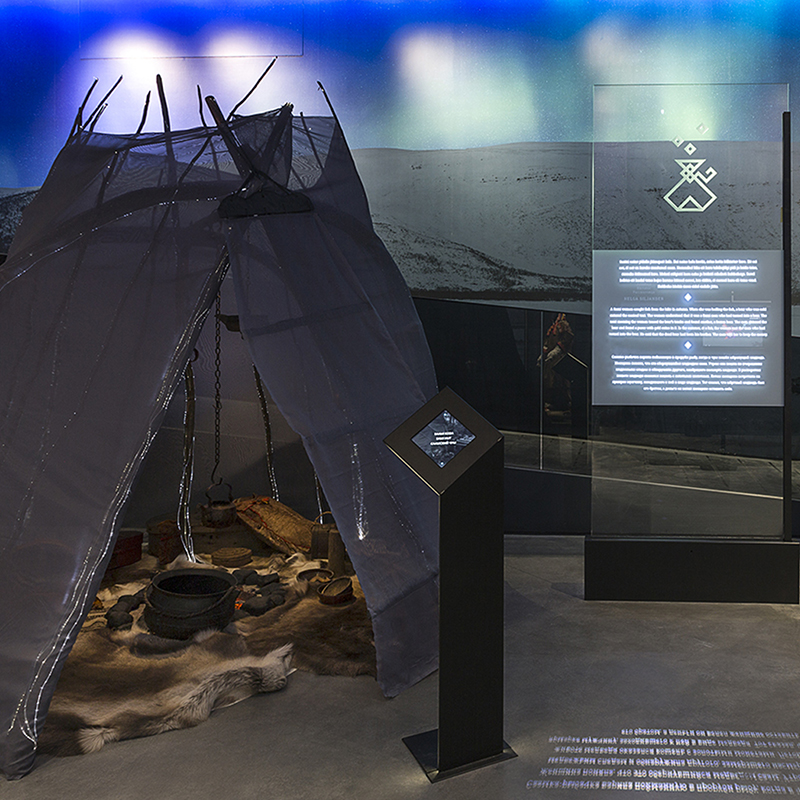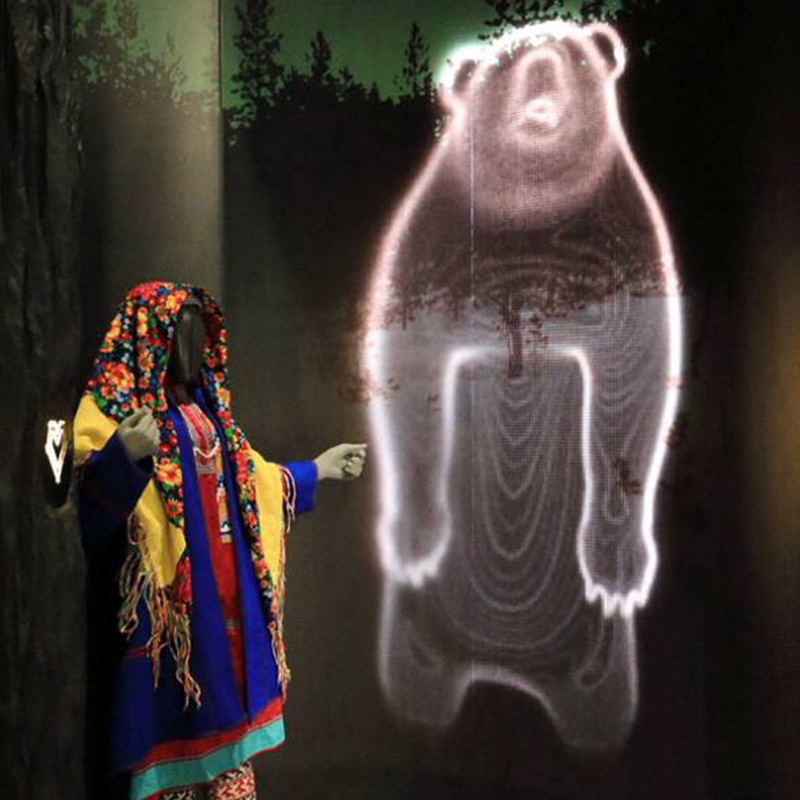Echo of the Urals
The exhibition is dedicated to the Finno-Ugric indigenous peoples without their own statehood who inhabit an immense swath of land from Scandinavia in the northern part of Eurasia and the Baltic Sea to the Taymyr Peninsula and Yenisei River in Siberia. The Finno-Ugric are settled down to – in some areas – the Danube and the Volga River, in the south. The central idea of the exhibition is inspired by the differences between the daily activities, rituals and traditional art of Finno-Ugric women and men.

The exhibition displays about one tenth of the collection of Finno-Ugric artefacts that the Museum owns. The viewers are invited to dive into explanations, explore different maps, play games, enjoy animations based on Finno-Ugric fairy tales and watch how the nation groups are living today. An exhibition of this size, based on the Finno-Ugric nations, has never been produced before. The central points of the display are Finno-Ugric settlements on one hand – a Komi hut, an Udmurtian shed, a Karelian sauna, a Sámi house, a Khanty forest camp – and several rituals on the other: the coming of age, weddings, honouring the forbears.
In addition, the exhibition offers an excellent display of Finno-Ugric clothing, daily tools and equipment. The most valuable part of the Finno-Ugric collection was compiled by the Museum 100 years ago; the exhibition combines the archaicness of the Finno-Ugric nations with a surprising design language, a futuristic, yet culturally sensitive spatial design and passionate aesthetics.
Read more at The Best in Heritage.








